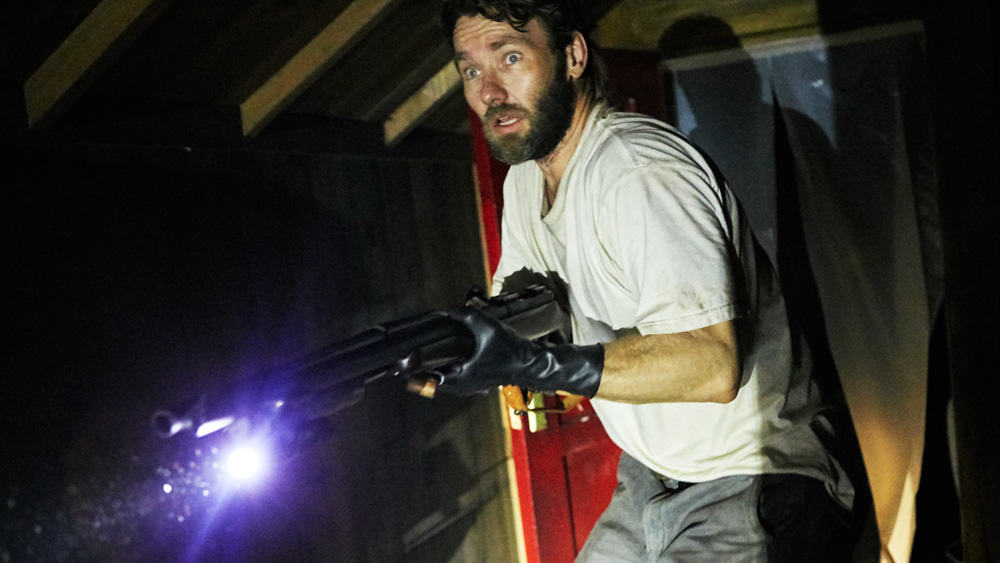A small family live in isolation for fear of what awaits them in the outside world, in It Comes at Night.
Director Trey Edward Shults first appeared on the scene in 2015 with his feature debut, Krisha; a stunning outing that was masterfully crafted, and critically lauded. Krisha’s greatest strength was its almost impossibly perfect tension. Shults used every tool at his disposal to lead his audience onto a tightrope that could give way at any moment. It Comes at Night is no different. Shults’ ability to string his audience along – to wind them up, to cut away the tightrope and watch them fall into terror or despair – is remarkable. This on its own would be enough to position Shults as one to watch. But, add in his restrained, yet powerful style of story-telling, and his eye for captivating visuals, and Shults is on the path to greatness.
While It Comes at Night has been predominately billed as a horror film, there’s a bit more to it than that. The film’s avoidance of genre conventions, and its embracing of the human elements of fear and survival, push it into psychological drama territory. But to nail It Comes at Night down to one genre is to misunderstand its purpose. This film was not created as a genre piece; it was not made to adhere to conventions, but rather to twist convention. It Comes at Night takes a premise that could be trite and commonplace, and delivers a gut-wrenching, and breathtaking story of fear, desperation, and most interestingly, doubt. Some will say the film is a story about paranoia; that the ‘It’ referred to in the title is in fact the paranoia of our characters. This is not the case. Paranoia is controlling, irrational, and all encompassing. Doubt, however, is insidious. It lingers in the back of one’s consciousness and slowly eats away at the rational mind. This is the feeling our characters endure and the audience suffers along with them. For instance, one character swears he is telling the truth to another, then stares intently into the distance when no one is watching. Is he thankful his honesty was well received, or relieved his lie was believed? It Comes at Night is filled with moments like these.

Further on from the in-story doubt, is the aforementioned sense of tension that runs throughout. It Comes at Night has a heartbeat; it thumps through the music, through the light, and through the framing – and we feel it. The audience rises and falls as the film’s heartbeat does. The beating is so strong and so compelling because the film gets to the root of our flaws and attributes as humans. It does away with the flesh and the fat, and exposes us to the raw nerves; the bone and the grit of human nature. We see the ugliness that appears when people are desperate to survive, desperate to protect their children, and desperate to quell their doubt and fear.
All of these elements are complimented by the astounding performances, and the beautiful photography. The patience of Shults’ camera and the ambiguity in the low-light photography is not only visually beautiful, but also perfect for the tone and mood of the film.
While It Comes at Night has the potential to be extremely divisive, it is ultimately a powerful example of the greatness that can be achieved when every element of a film is perfectly posited to serve its story. It is also an amazing exploration of how inhuman humans can become in the face of doubt and fear.
Fun Fact:
The painting featured in the movie at the beginning is titled “The Triumph of Death”.




COMMENTS